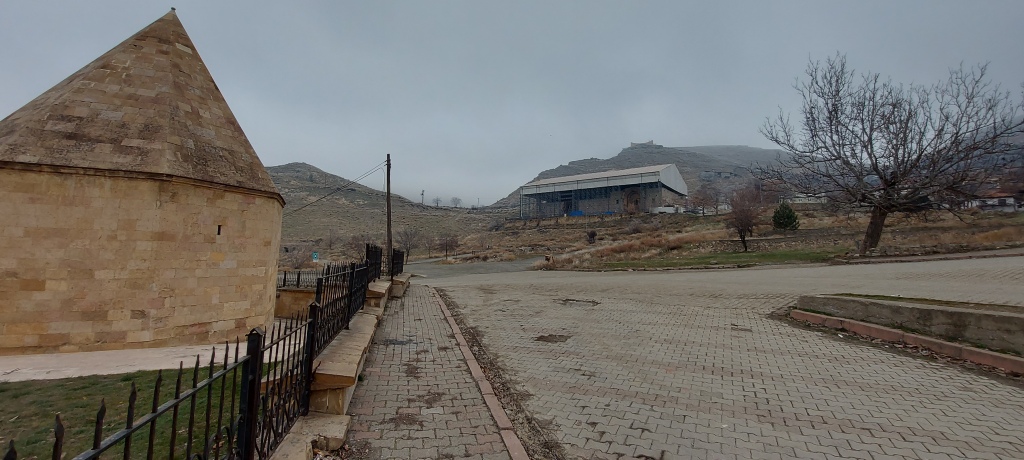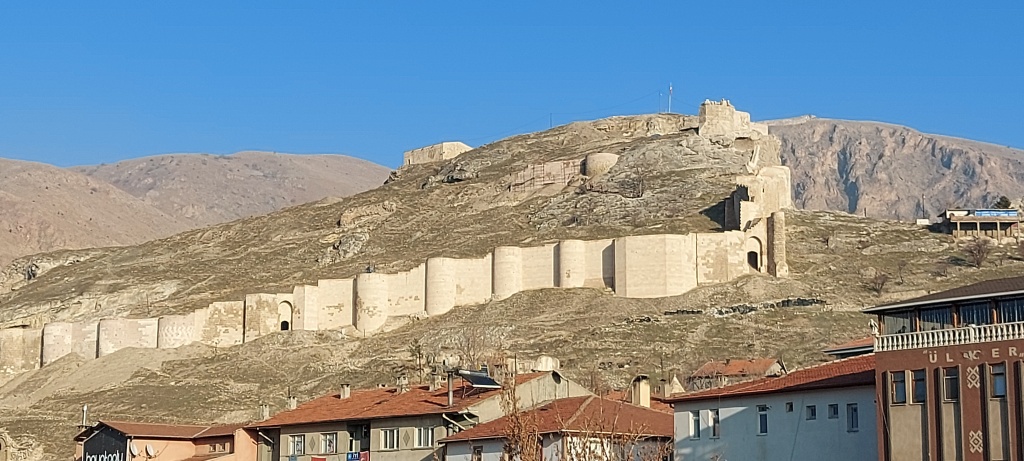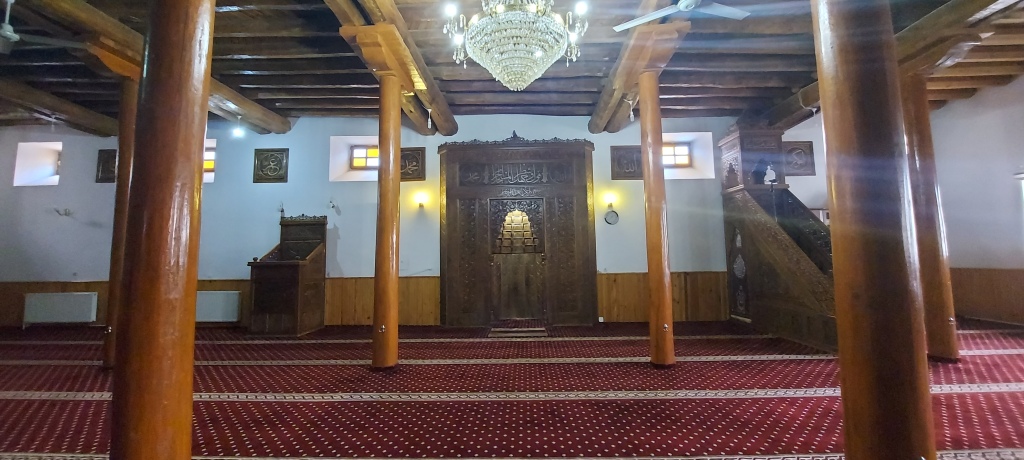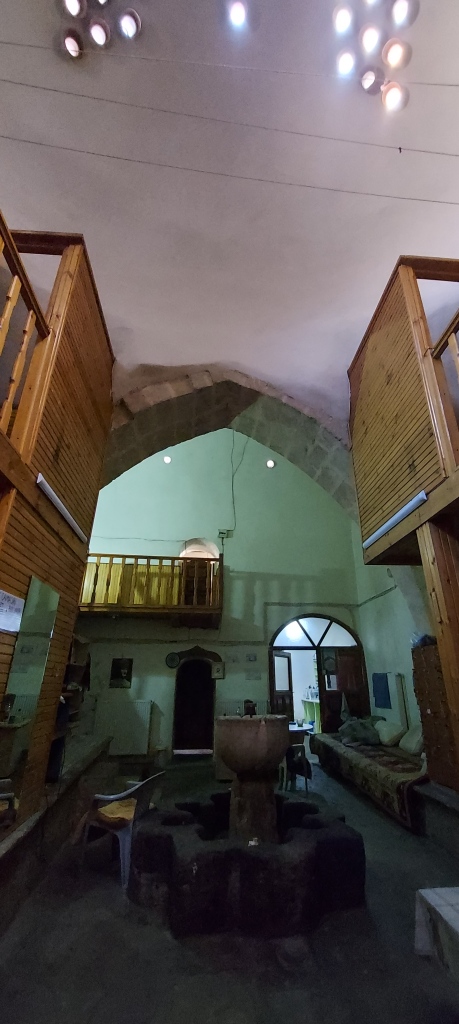The whole month of Ramadan I was no able to write anything for the blog…blame the mid afternoon slump! but Now we’re finished with Eid, I can now continue with this series of article.
Continuing from the last article, we are still in Sivas province, but we are heading to a town nearby called Divriği as a day trip before going back to Sivas and continue with the rest of our trip. Early in the morning I got into a taxi from a taxi stand just across the hotel I was staying in and the friendly taxi driver calmly and swiftly brought me to the train station about 10 minutes from the hotel. Along the way the driver was chatty even though he had no English and I had very broken Turkish we had a nice conversation. He was very curious about my country and he said it was his first time meeting someone from my region. From the station took a train from Sivas to Divriği. Even though I thought I researched the route and time thoroughly, I still got into a bit of trouble especially with the payment of the ticket and I almost missed the train altogether! Thankfully since the city is not very frequented by tourists, the officers there were willing to help and pointed out the correct train to take.
Along the way in the train I got to see some of interesting sights the Turkish countryside offer. Being from a very flat country plus not having any railroads or trains at all, riding the trail from Sivas to Divriği is such an amazing experience. seeing the early morning winter sun rising as we speed through the tracks, the village people doing their daily tasks, the snow slowly turning into steams of fresh water streams…all these things, pehaps to some very mundane, is a delight to see unfolding.
Around about 10 am, we arrived at Divriği train station. Again, even though I have researched about the trip through and through and am quite sure that there was a taxi stand nearby the station, I see absolutely no one was a the station at all. Thankfully there was a group of very kind men who helped me to call a taxi to the station. I am pretty much it is because I am the only foreigner there – During this time of the year I don’t think any tourists or students would come due to the weather and the cold climate. when I arrived the town was engulfed in fog. It was so cold and it was very hard to see anything at all. The men were kind enough to wait together with me for the taxi.
My taxi driver turned up to be a young lawyer who is not working his usual job because of the lack of cases so he was filling in for his uncle in the taxi business. He was another kind Turkish man even though his English was lacking. I wanted to go to the main attraction of the town which is the Divriği Ulu Cami ve Darüşşifası (Great Mosque and Hospital) but unfortunately once we got nearby the compound was blocked off by tall sheets of zinc – unfortunately the historical building was totally off limits to visitors. Perhaps seeing the disappointment in my face my driver immediately offered to bring me to other interesting places in the town.
First he bring me to the newest attraction of the town which is the Seyir Terası, a viewing glass platform on one of the highest point of the town. This would be a nice thing to do, but unfortunately the fog have still not cleared up, so you could not see anything from the platform. Plus the rain the night before turned into ice on the glass platform, making it extremely slippery.
On the way going to the city centre we passed a few Konaklar (mansions) and we went to one which seems to be one of the more interesting Konak . The name of the place is Mühürdarzade Konağı and it is now the Nuri Demirağ Museum taken from the name of an early Turkish Republic politician who developed the Turkish Railway Network. Thank to him we get to enjoy the train rides that offer us a way of going around and about Turkey. In fact this konak is actually Nuri Demirağ ‘s home in Divriği. The building itself is a traditionally styled Divriği house made of adobe and wood. The konak was so well preserved and it was an interesting place to see if you appreciate the architecture or the work of Mr. Nuri Demirağ.
Fog was still heavy at around 11.30 am when we arrived at the centre, I didn’t know where I couldgo. So I walked around the town square, visiting places that looks interesting in my eyes, even though I cannot walk too much. The terrain was slightly hilly and the streets are not very good for walking so it is a bit difficult for me to go around. Around the area there are several interesting mosques and unique conical roofed Türbes. These buildings are mainly from the Seljuk era, so you wouldn’t find any grand imposing imperial mosques here like in Istanbul. First we are going to one of the more interesting mosque near the central area
The first mosque, Kültür Cami, is very near to the centre, just in the middle of gentle slope. When I was going there there were very little activities around the place, only an older man washing his car which can already be considered an antique, really! Apparently the mosque was built in the 19th century, although there were no official record of this. The interior of the mosque uses a lot of wood, including the exquisitely carved Mihrab and Mimbar. The wooden ceiling is held up by thick sturdy wooden columns. A beautiful chandelier illuminates the rather dark prayer hall as the windows are quite small and high up – only one side of the mosque has a row of windows, although it is not enough to fully lighten up the space. Outside, a wooden minaret can be seen looking from the Mihrab side of the mosque.
Not far from the Kültür Cami is another mosque called the Boyalı Cami, although the plaque for the mosque above the doors calls it Hacı Recep Boyalı Cami. From the plaque we can also easily see that the mosque was built in 1956, hence the mosque was relatively new compared to the many other historical sites in the town. The plan of the mosque is another typical Anatolian village mosque although much lighter than the Kültür Cami that we just visited, thanks to the big floor to ceiling windows around the prayer hall. From the outside the mosque’s facade looked quite plain but on the inside the heavily tiled Mihrab and the pure white Mimbar stole the spotlight.
Around the city there are a lot of conical structures scattered around the town. These small buildings are actually tombs called Türbe and are final resting places of important people, particularly from the Seljuk Era . These tombs are made from stone, and most of them are actually restored. Inside the Türbes are practically empty except for the tombs. Most of them have small windows that only allows a little bit of light get into the chambers. I guess the entrances to these tombs are originally left open, but now there are closed off with iron gates, presumably to protect from unauthorized entry and vandalism, which unfortunately many sites suffer from. According to the information panels, the ceilings of the conical domes are often decorated with sky blue tiles, but they disappeared as time passes on, perhaps from natural damage or even by man’s hands.
I managed to visit a few of them, namely Hacib Kemareddin Türbesi, Naip (Gazezler) Kümbeti as well as Sitte Melik Kümbeti. If you don’t look close enough these tombs would look exactly the same but one you appreciate the carvings above the doors and the carved plaques you can distinguish them all apart.

Walking around the town, with the weather not being very good for sightseeing (plus it was very cold!) I decided to visit a hamam only to find it was not in operation at all. The door was closed, but being a curious monkey I was, I pushed the door into the historic building and it was open, but the lights were not on. I carefully closed the door back, but once I took a few steps back I heard the door creak open. A middle aged man peeked out of the doorway. He saw me and gave me a big smile. I asked if the hammam was open in broken Turkish, and he replied with just a “come in” (gel,gel!)
I soon realized that the hammam is no longer operational because of the high prices of firewood and upkeep for the whole place. The hammam attendant still took care of the place, but he cannot operate it how it was before, but still he warmly welcomed a stranger into his place and offered to share his meal. I accepted out of fear of offending him, but I didn’t took too much. The whole building was well maintained and even though the weather outside was quite cold, it was not very cold on the inside, perhaps because of the place were made of stone. Even though there was a very small radiator running, it would be able to heat the whole place very effectively. The hammam area was beautiful, very similar to the ones we can see in Istanbul.

I left the hammam quietly after spending some time there and hid a few Lira notes under the dish of the soup the attended served me, and proceeded to the town’s centre to wait for the bus going back to Sivas. While I was waiting the weather finally cleared up, and I can see many of the main tourist sites from the town centre such as the Sivas Castle/Fort and the Ulu Camii. Alas, I did not have much time left, and once the bus quota has been filled, we departed the town and returned back to sivas within a few hours…however, we arrived quite late it was already dark in Sivas. I took a taxi from the taxi stand available at the bus station and returned back to the smoke filled hotel where I immediately retired for my adventure the next day…







